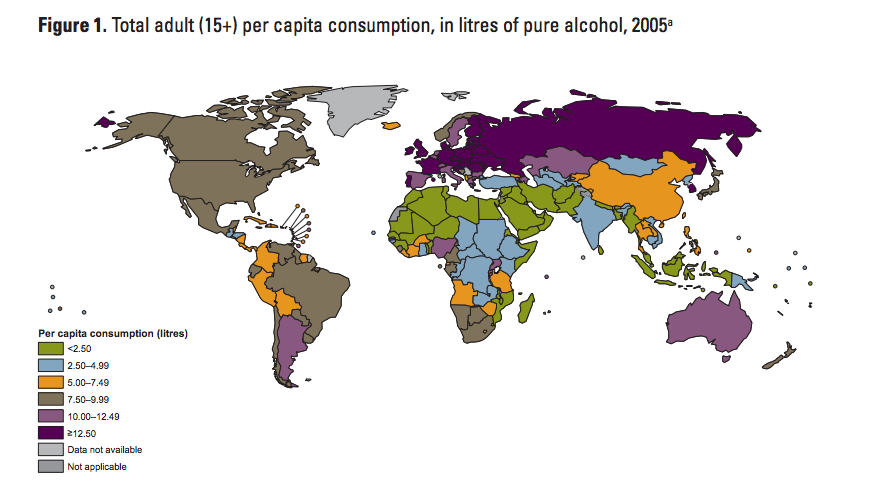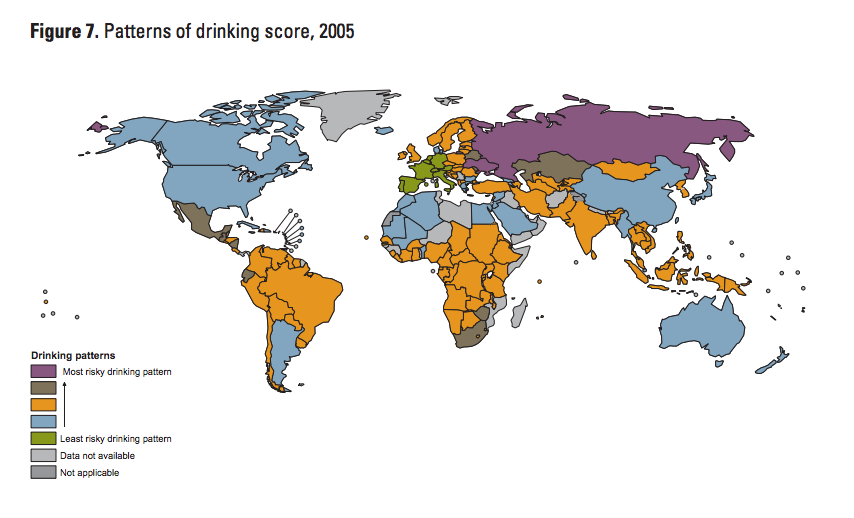The Russian Torpedo Targeting Alcoholism (and Butts)

That sounds terrible, right? But it’s not a disease. It’s the cure.
Let’s start with a map.


As a result, many Russian alcoholics turn to drastic measures to break the habit. That’s where a drug called disulfiram comes into play. Disulfiram, which is sold in the U.S. and other places under the brand name “Antabuse,” is used to treat alcoholism. It works by inhibiting the creation of an enzyme which the body needs to properly metabolize the alcohol; as a result, someone who takes disulfiram before drinking will start to feel ill, and nearly immediately. That’s where the headaches, nausea, fainting, and worse come into the picture. The theory behind disulfiram: if drinking makes you feel awful, you won’t drink. (And when administered as part of on-going treatment and with proper supervision, it often works, although treatment takes years.)
A typical dose of Antabuse lasts up to 14 days in one’s system, and while it may be difficult for an alcoholic to outlast the effects of the drug, it’s hardly impossible. So a Russian doctor named Vyacheslav Davidov has gone one step further, claiming to develop a way to get disulfiram to last up to three years. For $170, give or take, as American Public Media’s Marketplace reports, Dr. Davidov will outfit you with something called a torpedo — a disulfiram capsule surgically implanted in the alcoholic’s butt.
Dr. Davidov claims that his treatment — which is hard to remove on one’s own (but apparently, patients have tried) — lasts up to three years. At first, the reaction is instant, just like if someone had a drink after taking oral disulfiram. After a few weeks, Davidov says, the reaction may be delayed (“that torpedo poison is loose in your bloodstream,” in Marketplace’s words), but eventually, it’s going to kick in, pushing you into a terrible place. Davidov, of course, also sells an antidote for $300 or so, telling Marketplace that “if you want to drink, you have to pay!”
If that sounds sketchy, it gets worse. Davidov claims otherwise, but most of his treatment may be a scam. The Marketplace report is from 2011, and at the time, there was no such thing as a long-lasting dose of disulfiram. (Efforts to produce one now are ongoing with no reported successes.) Most likely, the disulfiram torpedo wears off after two, maybe three weeks, and subsequent side effects from alcohol consumption are a result of the placebo effect.
 Bonus Fact: In the 1950s, a psychiatrist named Humphry Osmond came up with a medicinal treatment for alcoholism, and with great results — according to Wikipedia, “after one year, around 50% of the study group had not had a drink — a success rate that has never been duplicated by any other means.” But don’t expect Dr. Osmond’s treatment to be made available any time soon. The medication he gave to the group was lysergic acid diethylamide, better known as LSD.
Bonus Fact: In the 1950s, a psychiatrist named Humphry Osmond came up with a medicinal treatment for alcoholism, and with great results — according to Wikipedia, “after one year, around 50% of the study group had not had a drink — a success rate that has never been duplicated by any other means.” But don’t expect Dr. Osmond’s treatment to be made available any time soon. The medication he gave to the group was lysergic acid diethylamide, better known as LSD.
From the Archives: Mister Beer Belly: The man who brews his own beer — in his stomach.
Take the Quiz: Can you name the countries that have the highest per capita alcohol consumption rates? (Hint: Russia is one of them.)
Related: “Vodka Politics: Alcohol, Autocracy, and the Secret History of the Russian State” by Mark Schrad. 4.2 stars on 17 reviews.
